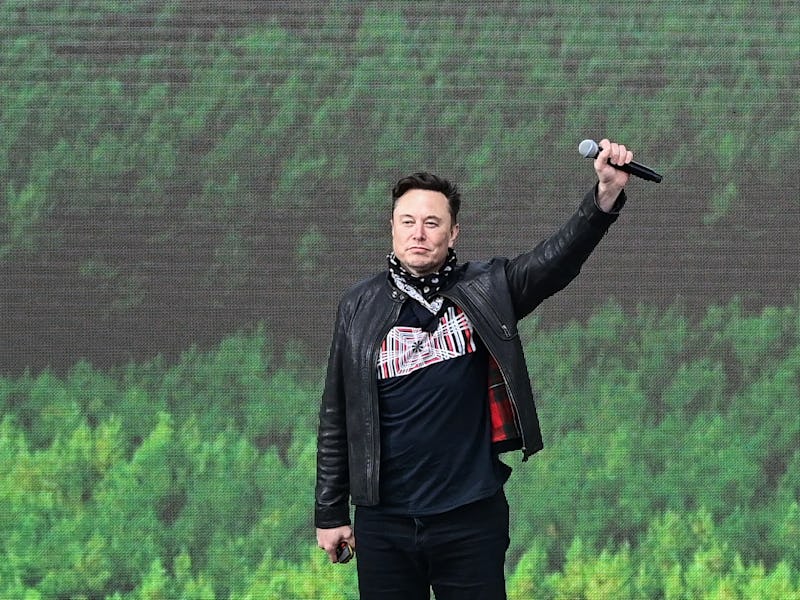Tesla Q3 2021 earnings: 3 biggest takeaways
On Wednesday, Elon Musk’s electric car company Tesla held an earnings call with a difference — Elon Musk wasn’t there.

On Wednesday, Elon Musk’s electric car company Tesla held an earnings call with a difference — Elon Musk wasn’t there.
Tesla Model Y getting built in Grünheide.
As eagle-eyed readers may remember from the last quarter, Musk did say during the last earnings call that he will “most likely not be on earnings calls unless there's something really important that I need to say.”
The third-quarter 2021 call was an altogether more relaxed affair. Zach Kirkhorn, Master of Coin (said with a straight face?), calmly outlined future plans in his distinctive chilled-out voice. Brian Johnson, an analyst with Barclays, said that it was “great to hear there's a team at Tesla.”
But what was perhaps most surprising was what stayed the same. Musk wasn’t there to offer sudden outbursts on the future of humanity, but Kirkhorn and the team cut through with eye-opening, ambitious targets:
- Average growth pace of 50 percent per year
- Model Y set to be the world’s best-selling vehicle
- Supercharger global network size to triple in the next two years
- Austin and Berlin to start producing cars before the end of this year
- First cars with new batteries packing the 4680 cells early next year
Pretty bold considering a global chip shortage and supply issues. Read on for the three biggest takeaways, key stats, and how to get your hands on a subscriber-only transcript.
An exclusive transcript
Want to find out minute-by-minute what happened during Tesla’s earnings call with analysts and investors? Musk Reads+ has completed a transcript of Monday’s conference call exclusively for our subscribers. Get straight to the quotes that matter most without having to sit through a hazy audio recording.
Find your copy here. Remember, you can always read back through previous subscriber-only issues by visiting the archives.
The key stats:
- Tesla reported non-GAAP earnings per share of $1.86. This was better than expected, as analysts predicted that figure to reach $1.59.
- GAAP net income came in at $1.62 billion for the quarter
- Tesla reported free cash flow of $1.3 billion for the quarter. Capital expenditures reached $1.8 billion. It had an operating margin of 14.6 percent for the quarter, an all-time high.
- The firm delivered 241,391 cars in the quarter, a 79 percent increase year-over-year. It deployed 1,295 megawatt-hours of solar, a 71 percent increase. It also reached 29,281 Supercharger connectors, a 51 percent increase.
- Tesla claimed the Fremont factory produced more cars in the past 12 months than any other year
The 3 key takeaways:
3 — Tesla wants to massively increase production speed
Even without Musk in tow, Kirkhorn and the team managed to keep things ear-catching. The company plans to reach a staggering production growth rate of 50 percent per year.
If it keeps growing at 50 percent each year, it should …
- Produce 749,325 cars in 2021; so far it’s produced 624,573 cars, so this goal seems reasonable
- Break the one million mark in 2022
- Break the two million mark in 2024
- Break the five million mark in 2026
- Break the 10 million mark in 2028
- Achieve Musk’s overall goal of 20 million cars per year by 2030
2 — $25,000 car? It’s on the way… or is it?
Will Tesla launch a $25,000 car in 2023, like Musk said at Battery Day? Drew Bagliano, senior vice president of powertrain and energy engineering, was noticeably cool on the idea.
Why might it not happen? Stop me if you’ve heard this one before: Tesla does not have enough battery cells.
It perhaps goes without saying that, if cell constraints are that bad, it’s also going to constrain Tesla’s ability to grow at speed.
Want to read in-depth analysis on these three points, more surprising details from the Q3 earnings call, and access to the entire call transcript? Read the full breakdown, only in MUSK READS+.
1 — Full Self-Driving does factor into trade-in price
A common criticism of the Full Self-Driving feature is that the feature cannot be transferred to new vehicles. Kirkhorn was asked whether Tesla could allow FSD owners to transfer it to a new car for a smaller fee, as early adopters are penalized for buying at its cheaper price — they now have to buy again at the $10,000 price.
Kirkhorn responded — but you’ll have to subscribe to hear what he had to say.
TO READ THE FULL LIST SUBSCRIBE TO MUSK READS+.
Here is what you will gain from subscribing to MUSK READS+:
- Three emails per week, enabling fans to go deeper into the week’s news.
- Original interviews and reporting, longform analysis, previews, and recaps of major events, including earnings calls and more.
- Community-focused extras like responses to reader mail, an upcoming event calendar, and notable anniversaries.
- An archive of previous subscriber-only content, so you can easily read back over what you might have missed.
- Promotional deals and offers.
- Supporting original, independent journalism.
MUSK READS+ is a fully independent operation. We are not Elon Musk, nor are we employed by him. Our job is to report the events we find newsworthy, giving you the inside look at the worlds of space rockets, electric cars, clean energy, and more. It means first-hand accounts of a SpaceX rocket launch, Tesla insights from third-party analysts, and more.
If you want to support us in our mission, and receive original interviews and analysis, consider contributing with a subscription.